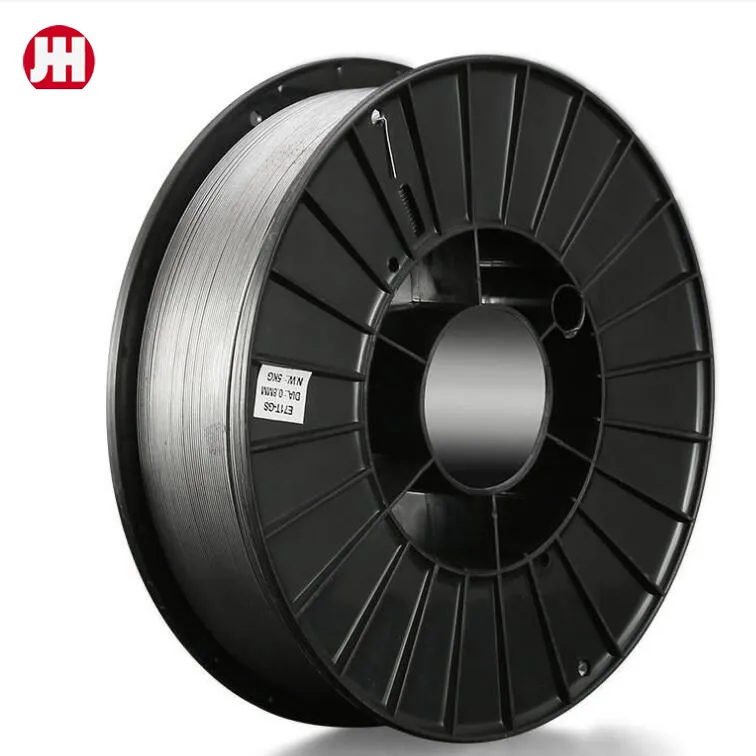Slag Inclusion Issues in Stainless Steel Flux Core Welding
Stainless steel welding is a cornerstone of modern fabrication, prized for its durability and corrosion resistance. However, even seasoned welders face challenges, and slag inclusion remains a persistent issue—especially when using flux cored welding wire, gasless aluminum welding wire, or specialized stainless steel flux core welding wire. Slag inclusions not only compromise weld integrity but also increase project costs due to rework. This article explores the root causes of slag formation, practical solutions, and best practices to ensure flawless welds. By understanding the nuances of these welding wires, professionals and hobbyists alike can achieve cleaner, stronger results.

Understanding the Role of Flux Cored Welding Wire in Stainless Steel Welding
Flux cored welding wire revolutionized the welding industry by combining the convenience of a continuous wire feed with the protective benefits of flux. Unlike solid wires, the hollow core of flux cored welding wire contains mineral compounds and deoxidizers that shield the molten weld pool from atmospheric contaminants. This is critical in stainless steel welding, where oxygen and nitrogen exposure can lead to porosity and slag entrapment.
However, improper use of flux cored welding wire can exacerbate slag inclusion. For instance, incorrect voltage settings or travel speeds may prevent the flux from fully vaporizing, leaving residual slag. Additionally, stainless steel’s low thermal conductivity demands precise heat control. Too much heat can over-melt the flux, while insufficient heat fails to activate its protective properties. Understanding these dynamics is key to minimizing defects.
Challenges of Slag Inclusion with Gasless Aluminum Welding Wire
While gasless aluminum welding wire is designed for aluminum projects, some welders experiment with it on stainless steel to avoid external shielding gas. This approach often backfires. Gasless aluminum welding wire relies on flux to generate its own shielding gas, but its composition is tailored for aluminum’s unique properties. When used on stainless steel, the flux struggles to handle the higher melting point and chromium content, leading to incomplete slag removal.
The mismatch between gasless aluminum welding wire and stainless steel creates brittle, porous welds riddled with slag. Furthermore, aluminum’s oxide layer requires aggressive flux agents, which react poorly with stainless steel’s oxide layer. This chemical incompatibility increases slag adherence, making post-weld cleanup labor-intensive. Stick to purpose-built stainless steel flux core welding wire for optimal results.
Best Practices for Stainless Steel Flux Core Welding Wire
To maximize the performance of stainless steel flux core welding wire, follow these guidelines:
Optimize Parameters: Use a voltage range of 24–28V and a wire feed speed of 200–300 IPM. Adjust based on material thickness.
Clean Base Metal: Remove oils, rust, and mill scale to prevent flux contamination.
Maintain a Steady Arc Length: A ⅜-inch gap ensures consistent flux activation.
Employ a Drag Technique: Angling the torch at 15–20° drags slag behind the weld pool, reducing inclusions.
Store Wire Properly: Keep stainless steel flux core welding wire in a dry environment to avoid moisture absorption, which destabilizes flux.
Post-weld, use a chipping hammer and wire brush to remove slag while it’s still brittle. For critical applications, consider grinding or pickling to restore corrosion resistance.
FAQs About Flux Cored Welding Wire, Gasless Aluminum Welding Wire, and Stainless Steel Flux Core Welding Wire
What Are the Advantages of Using Stainless Steel Flux Core Welding Wire?
Stainless steel flux core welding wire offers deep penetration, high deposition rates, and excellent corrosion resistance. Its self-shielding design eliminates the need for external gas, making it ideal for outdoor or windy conditions.
Can Gasless Aluminum Welding Wire Be Used for Stainless Steel Projects?
No. Gasless aluminum welding wire is formulated for aluminum’s thermal and chemical properties. Using it on stainless steel leads to poor fusion, excessive slag, and weak welds. Always match the wire to the base metal.
How Does Flux Cored Welding Wire Compare to Solid Wire in Preventing Slag Inclusion?
Flux cored welding wire inherently produces more slag due to its flux core. However, with proper technique, slag removal is easier than with solid wire, which requires external gas and meticulous cleanliness.
What Steps Can I Take to Reduce Slag When Using Stainless Steel Flux Core Welding Wire?
Ensure optimal voltage, maintain a consistent travel speed, and clean the weld joint thoroughly. Multi-pass welds should have slag removed between layers to prevent trapped debris.
Is Flux Cored Welding Wire Suitable for Beginners?
Yes! Flux cored welding wire simplifies the process by eliminating gas tanks. Beginners should practice on scrap metal to master arc control and slag management.
Slag inclusion in stainless steel welding is manageable with the right knowledge and tools. By selecting stainless steel flux core welding wire over incompatible options like gasless aluminum welding wire, and adhering to best practices, welders can produce clean, durable joints. Whether you’re a professional or DIY enthusiast, understanding the role of flux cored welding wire ensures efficiency and quality in every project. Invest in the correct materials, refine your technique, and watch your welds transform from flawed to flawless.
-
What is a medium-frequency pulse? What types of welding are suitable for?НовиниNov.24,2025
-
Why is the overall cost of CO2 welding lower than that of shielded metal arc welding?НовиниNov.21,2025
-
Welding Knowledge 6НовиниNov.20,2025
-
What is a low-frequency pulse? What types of welding are they suitable for?НовиниNov.19,2025
-
Why are the weld joints from CO₂ gas shielded welding of such high quality?НовиниNov.18,2025
-
J506 Welding Rod - Low Hydrogen, All-Position, AC/DC E7016НовиниNov.17,2025


